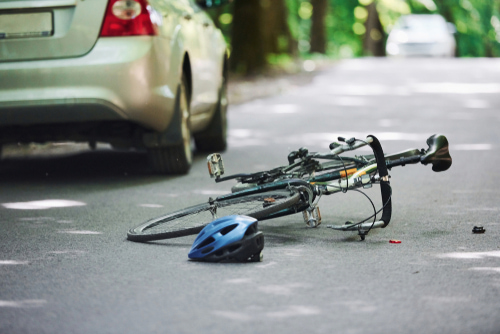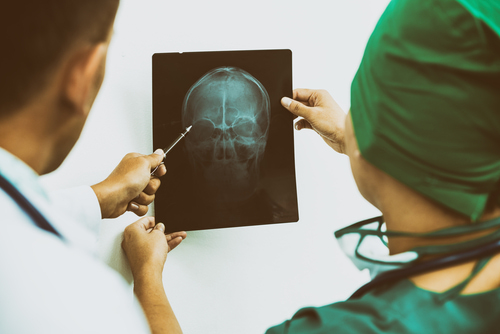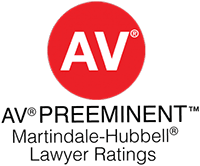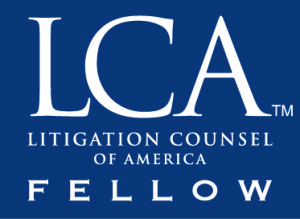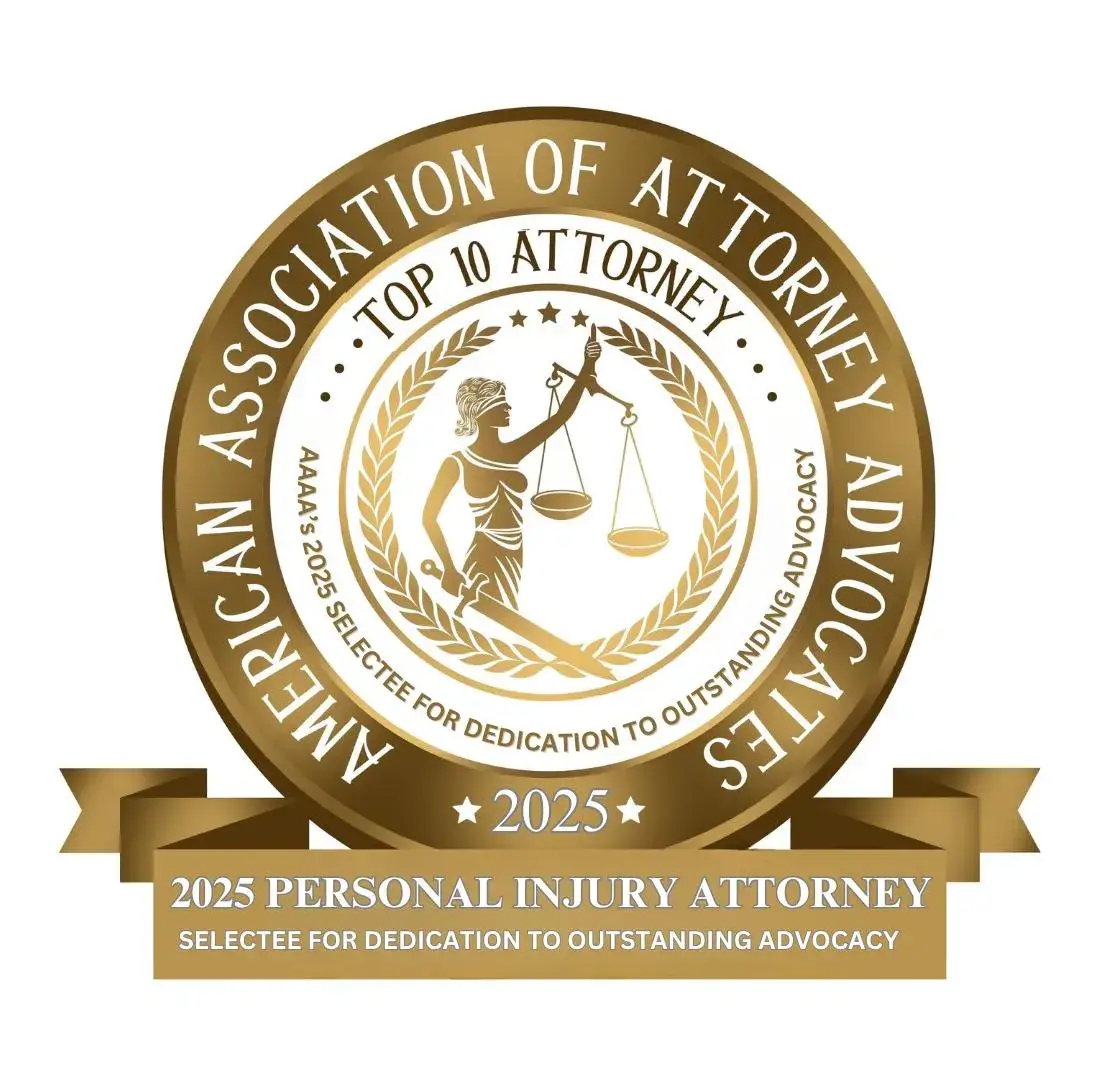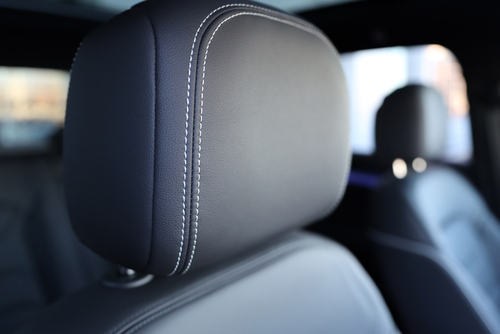
How Do Headrests Prevent Injury?
Headrests are often overlooked as simple comfort features, but their primary function is injury prevention. In a rear-end collision, a well-designed and positioned headrest can reduce the risk of whiplash, spinal trauma, and traumatic brain injury. These injuries are not limited to high-speed crashes. Even low-impact collisions can result in long-term pain and neurological impairment when vehicle occupants are not adequately protected.
This article by Maggiano, DiGirolamo & Lizzi, PC explains how headrests prevent injury, how their design has evolved to meet safety standards, and what legal options may be available when defective or poorly adjusted headrests contribute to harm. It also addresses state-specific liability issues, the types of compensation available in New York and New Jersey injury claims, and how a car accident lawyer can help victims pursue justice when safety features fail.
How do headrests prevent injury in a car accident?
- They limit rearward head motion: During a rear-end crash, headrests reduce the whip-like effect that causes neck strain and whiplash.
- They align the head and spine: A well-positioned headrest keeps your head from snapping back, lowering the risk of spinal cord damage.
- Modern systems are active: Many cars now use active head restraints that move forward during impact to close the gap instantly.
- Proper adjustment is key: The headrest should be level with the top of your head and less than 2 inches away for max protection.
- Design defects can cause harm: Faulty or fixed headrests may collapse or fail to protect, leading to serious head, neck, or brain injuries.
- Legal claims may follow: If a defective headrest worsened your injuries, you may have a product liability case against the manufacturer.
The Role of Headrests in Injury Prevention
Headrests, more accurately called head restraints in regulatory and engineering contexts, are intended to limit the rearward motion of the head during a collision. When a vehicle is struck from behind, the body moves forward with the seat, but the head tends to lag due to inertia. This can cause hyperextension of the neck, commonly known as whiplash.
An adequately designed headrest reduces the distance the head travels before it meets resistance. The goal is to maintain alignment between the head and spine, limiting strain on soft tissues, and minimizing the likelihood of spinal cord injury. The best-performing headrests offer both structural support and energy absorption.
Modern vehicles often include active head restraint systems, automatically moving the headrest forward and upward in response to a rear impact. These systems aim to close the gap between the occupant’s head and the headrest at the moment of collision. Studies conducted by insurance research organizations have shown that active head restraint systems can significantly reduce the risk and severity of whiplash injuries.
What Is a Properly Adjusted Headrest?
A headrest only prevents injury if it is appropriately positioned. Incorrect placement can reduce or eliminate its protective function. National Highway Traffic Safety Administration guidelines recommend that the top of the headrest be at least level with the top of the occupant’s head. The distance between the back of the head and the headrest should be as small as possible, ideally no more than two inches.
Common adjustment errors include:
- Setting the headrest too low. This may cause the head to pivot over the restraint, increasing strain on the cervical spine.
- Leaving too much distance between the head and the restraint. This delay increases the acceleration of the head relative to the torso.
- Tilting the seatback excessively. This reduces the contact area and can undermine the restraint’s function.
Many drivers are unaware of these guidelines, and some vehicles do not allow a sufficient adjustment range. When manufacturers prioritize design aesthetics or seat comfort over injury prevention, the result may be an inadequate safety system. In such cases, serious injuries can occur even when the occupant is seated correctly and wearing a seatbelt.
Real-World Injury Risks from Poor or Defective Headrest Design
Although headrests are mandated by federal safety regulations, not all headrests provide effective protection. Some designs lack sufficient height or lateral support.
Others are mounted in a fixed position that cannot be adjusted to accommodate passengers of varying sizes. Mechanical defects may also prevent the proper movement of adjustable restraints during an accident.
Defective headrests may cause or fail to prevent the following injuries:
- Whiplash. A soft tissue injury to the neck caused by hyperextension and rapid flexion.
- Concussion. Resulting from sudden head motion or contact with interior surfaces.
- Spinal disc herniation. Often caused by rotational or axial loading of the cervical spine.
- Chronic neck pain. Persistent soft tissue injury or inflammation following trauma.
These injuries may be compounded if the headrest collapses during impact, detaches from the seat, or fails to maintain its position. In rare cases, passengers have suffered direct trauma when detached headrests became projectiles in the cabin.
Vehicle recalls have been issued in the past for defective head restraint systems. These include recalls for improper welds, headrest detachment during crash testing, and malfunctioning active head restraints. Consumers are not always informed of these defects before an accident occurs.
Manufacturers are legally obligated to design and produce components that meet applicable safety standards and perform as intended under foreseeable conditions. Injured parties may have grounds to pursue a product liability claim when this duty is breached.
Legal Liability for Headrest-Related Injuries
Liability for a headrest-related injury may involve one or more parties, depending on the circumstances of the incident. The most common defendants in these cases include:
- Vehicle manufacturers. Responsible for the design and production of the seat and headrest system.
- Parts suppliers. If a specific component, such as the locking mechanism or active restraint actuator, is defective.
- Dealerships or maintenance providers. When improper installation, modification, or failure to repair contributed to the injury.
In a standard personal injury claim arising from a car accident, the injured party must prove that another driver was negligent. However, a product liability claim based on a defective headrest follows different rules. These claims do not require proof of negligence. Instead, plaintiffs must show that:
- The headrest was defective in design, manufacture, or warning
- The defect existed at the time the product left the defendant’s control
- The defect caused or contributed to the plaintiff’s injury
New York applies strict liability in product defect cases, which allows injured parties to pursue claims against manufacturers without proving intent or carelessness. In New Jersey, plaintiffs may file suit under the New Jersey Product Liability Act, which similarly imposes liability for defective products that cause harm.
Claims involving defective automotive components require detailed investigation and technical analysis. Accident reconstruction specialists, biomechanical engineers, and automotive safety consultants may be called upon to examine the headrest’s performance and compare it to federal standards and industry norms.
Because these cases often involve multiple parties and extensive discovery, injured individuals should act promptly to preserve evidence and meet legal filing deadlines. In New York, personal injury claims must be filed within three years of the incident. In New Jersey, the statute of limitations is two years. Claims against government-owned vehicles may involve shorter deadlines and special notice requirements.
Can a Defective Headrest Be Grounds for a Lawsuit?
A defective headrest may give rise to a legal claim if it contributes to injury in an accident. These lawsuits are often based on product liability theories, including design defect, manufacturing defect, or failure to warn. Claimants must establish a causal link between the defect and the resulting harm.
Common scenarios that justify legal action include:
- A headrest that collapsed or detached during a collision
- Inadequate height or rigidity that allowed excessive neck movement
- Mechanical failure of an active head restraint system
- Improper installation during vehicle assembly or repair
In some cases, plaintiffs may file a dual claim: one against the at-fault driver for negligence and another against the manufacturer or dealer for product liability. This approach is often necessary when the injury’s severity is inconsistent with the crash’s force.
Product defect claims generally require expert evaluation. Vehicle inspection, crash reconstruction, and mechanical analysis determine whether the headrest met applicable safety standards and whether an alternative design could have reduced or prevented the injury.
Comparative Fault in New York and New Jersey
Comparative fault may arise in cases where the headrest was not properly adjusted. In these situations, insurance companies and defendants may argue that the injured party contributed to the severity of the injury.
New York applies a pure comparative fault rule. Under this framework, a claimant can recover damages even if they are primarily at fault. However, the award will be reduced by their percentage of responsibility.
New Jersey uses a modified comparative fault model. If the plaintiff is more than 50 percent at fault, they are barred from recovering any compensation. The damages are reduced proportionally if they are 50 percent or less at fault.
Comparative fault arguments may include improper seat adjustment, failure to replace a damaged headrest, or aftermarket modifications. These defenses can be challenged with proper documentation and evidence showing that the injury would have occurred regardless of occupant conduct.
Documenting the Injury for Maximum Legal Value
The strength of any headrest-related injury claim depends heavily on the quality of the documentation. Medical records, crash evidence, and witness statements all contribute to the overall credibility and value of the case.
Important forms of evidence include:
- Emergency treatment records documenting initial symptoms and physical findings
- Radiological studies, such as MRIs or CT scans that show spinal or brain injury
- Physician narratives explaining the injury mechanism and prognosis
- Employment records showing missed time from work or permanent restrictions
- Statements from family members or caregivers describing daily limitations
Photographs of the vehicle interior, including the headrest’s position and condition after the crash, are also helpful. A certified vehicle inspection may uncover mechanical failure or design issues supporting the liability claim.
When available, dashcam footage or security video may capture the crash dynamics and occupant movement. This evidence is particularly valuable in disputed liability cases.
Damages Recoverable in Headrest Injury Claims
Injury claims involving defective or poorly adjusted headrests may include economic and non-economic damages. These categories reflect the financial losses and personal harm suffered by the claimant.
Recoverable damages may include:
- Medical expenses. Emergency care, hospitalization, diagnostic tests, rehabilitation, and long-term treatment
- Lost income. Missed work, reduced hours, or permanent loss of earning capacity
- Pain and suffering. Physical pain, neurological discomfort, or inability to perform daily activities
- Emotional distress. Psychological harm, including anxiety, depression, or trauma-related conditions
- Property damage. Repair or replacement costs for vehicle damage resulting from the crash
- Loss of consortium. Disruption of marital or familial relationships due to injury-related impairments
In severe cases, courts may also award punitive damages. These are rare but may apply when a manufacturer knew of a defect and failed to act, or when the conduct was reckless.
New York and New Jersey do not impose statutory caps on non-economic damages in standard personal injury claims. Compensation is based on the jury’s evaluation of the evidence, supported by medical testimony and documented losses.
Special Considerations for At-Risk Populations
Headrest-related injuries may have different implications for certain groups. Children, elderly individuals, and individuals with preexisting medical conditions may suffer more serious consequences from insufficient protection.
For child passengers, booster seats and car seats must be correctly installed to ensure proper alignment with the headrest or head support system. Improper setup may reduce the effectiveness of both devices.
Elderly drivers and passengers are more susceptible to cervical spine injuries due to reduced bone density and spinal flexibility. They may require more extended recovery periods and face permanent mobility loss.
Claims involving these populations often require specialized medical evaluations and future care planning. Legal strategies must account for diminished capacity, anticipated long-term needs, and potential settlement oversight for minors or incapacitated adults.
When to Contact a Car Accident Attorney
Legal representation may be appropriate when the injury is severe, liability is disputed, or a defective product is suspected. An attorney can manage communication with insurers, preserve evidence, and identify all potentially liable parties.
Consider seeking legal advice if:
- The headrest detached or failed during impact
- The vehicle has been subject to a headrest-related recall
- The injury involves whiplash, traumatic brain injury, or spinal damage
- There is concern about meeting state deadlines or notice requirements
- The injury occurred in a rideshare, company vehicle, or commercial setting
Legal counsel can also coordinate independent vehicle inspection, consult with biomechanical experts, and ensure that deadlines are met under the applicable statute of limitations.
In New York, this is generally three years from the date of injury. In New Jersey, the deadline is two years, with a 90-day notice requirement for claims involving government-owned vehicles.
Contact a Headrest Injury Lawyer in New York or New Jersey
If you or a loved one suffered a head, neck, or spinal injury after a vehicle accident and believe that a defective or poorly adjusted headrest contributed to the harm, legal options may be available.
Maggiano, DiGirolamo & Lizzi, PC represents injury victims throughout New York and New Jersey. Our law firm handles claims involving rear-end collisions, product defects, and serious occupant injuries. Our experienced headrest injury attorneys evaluate every claim with a focus on liability, compensation, and long-term needs.
Call (201) 585-9111 to speak with a lawyer about your headrest injury for a free consultation, or submit a contact form online. There is no charge for an initial review, and your case will be assessed based on the facts, documentation, and applicable state law.
Frequently Asked Questions About Headrest-Related Injury Claims
Can a manufacturer be sued if the headrest design fails federal safety tests?
Yes. Failing to meet applicable safety standards may support a design defect claim, especially if the failure contributes to injury in a foreseeable event.
Is it still possible to file a claim if the seatbelt was not worn during the crash?
Possibly. The lack of a seatbelt may reduce compensation under comparative fault rules, but does not automatically bar recovery.
What if the headrest injury happened in a rideshare or taxi?
You may pursue a claim against the driver, the rideshare company, or the vehicle owner, depending on the cause of the injury and applicable insurance coverage.
How do I know if the vehicle was subject to a headrest recall?
The National Highway Traffic Safety Administration maintains a searchable recall database using the vehicle identification number (VIN). An attorney can also request recall documentation as part of the legal investigation.
Are passengers eligible to file a claim for headrest-related injuries?
Yes. Passengers have the same rights as drivers to pursue compensation for injuries caused by defective equipment or negligent operation.



